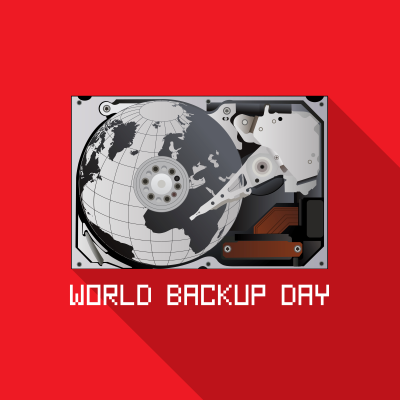Whether you’re referring to ransomware, phishing, data theft, spoofing, any of the many forms of cybercrime, it is something that all businesses need to prepare themselves for. While different business sizes will have differing scales to contend with, these kinds of preparations will involve the same basic principles. To help you best defend your company against cybercrime, here are a few tips based on those principles.
Washington Works Blog
For years, we’ve heard about how machines are coming for our jobs. We may even know some people who have been replaced by machines of some sort. This has given workers an overarching fear that once the machines are smart and capable enough to do what they do, that they will be out on their cans with few real options. This is mostly a fallacy. Today, we will explore the notion that machines are out for our jobs and how they may actually work to make our jobs better.
The Internet of Things is growing at a rapid pace, and you have to take it into account if you want to maintain a safe and effective office infrastructure. Thankfully, you don’t have to do this alone; we’re here to help you with three key tips to help you get the most out of your Internet of Things devices without putting your organization at risk.
We all know the importance of IT maintenance and management when it comes to effectively running a business, but it’s really hard to ensure that your technology is being properly maintained when your staff have one foot out the door. A new survey from Gartner suggests that IT employees are more likely to leave your business than other non-IT employees, and this puts a heavier burden on you to make sure technology is properly taken care of.
The most successful businesses are those that are always seeking to improve what they offer—oftentimes, taking a successful element and simply making it more efficient to deliver. In the past, this basically meant that businesses needed to have their employees work more quickly. However, today’s improved technology and the automation that it makes possible have delivered a much more consistent option.
With cybersecurity a priority for every business that depends on their IT, there are a lot of different strategies being utilized out there to keep threats off of networks and data safe. One of the most advanced strategies being used today is enlisting a service that runs a Security Operations Center (SOC). Today, we’ll investigate what a SOC is and how it works to keep threats at bay.
World Backup Day is March 31st, each and every year. However, while there is value to having a dedicated holiday to raise awareness of the need for backup, it should not be the only time it is considered. Let’s go over the importance of proper backup practices, just in time for the holiday, so that you can establish the backup that your business needs if it's not already in place.
A good business owner envisions the future and what it could bring about. You may have already devoted a considerable amount of time to the good things that could happen, but how often do you picture the bad? If you don’t imagine the worst-case scenario, you could be putting your business’ life on the line. Are you prepared to deal with a data loss incident?
When you think of the government, you don’t immediately think of an organization that is at the forefront of innovation. Sure, they have all that money at their disposal, but most of it goes here and there to try to help the people of a constituency; and, frankly it isn’t terribly efficient. What may surprise you is that governments are embracing cloud services and it tends to benefit everyone. Let’s see how governments are taking advantage of cloud computing.
How often do you find yourself stressing out about who has access to which data or internal resources on your company network? What about who has access to open the front door of your office or who has access to important physical resources within your building? Ensuring the security of your business’ assets is critical, and access control tools can help your company ensure that only authorized individuals have access to specific parts of your organization’s infrastructure, be it physical or digital.
Laptops are pretty great, I think we can all agree, simply due to their portability. Having said that, the one-screen situation that laptops bring with them can certainly get in the way of productivity—particularly for those who are used to using more than one. Let’s discuss why an additional display is so helpful, and what your options may be for hooking one up to your laptop.
Getting your staff to care about your organizational network and data security may be more difficult than you might think, but it’s not a lost cause. Today, keeping your business’ organizational security strong relies heavily on your staff’s willingness to follow the right practices, so today we thought we’d give you seven tips to get your people to care about security
In the business world, it can be difficult to know who to trust in regard to cybersecurity. In many cases, businesses are simply opting to not trust any device, friend or foe, when it comes to their data security. This type of zero-trust model is slowly becoming the norm, and it’s one that your organization might consider moving forward.
How often over the past year or two have you gone to replace a device on your infrastructure, only to find that the price has increased or the device simply isn’t available? This is an issue with the current hardware shortage, particularly for business electronics. Since businesses depend on technology, it becomes critical that you understand how this shortage impacts your day-to-day operations.
In modern businesses, automation can be implemented in a lot of ways, but for small businesses, it may be more difficult to find ways to incorporate time-saving automation. In this week’s blog we’ve decided to point out a few ways even the smallest business can use automation to their advantage and give their employees the freedom to focus on revenue creating processes.
You’ve probably heard people talk about a business’ carbon footprint. You even might think you have a good idea of what your business’ footprint is. With global climate change evident by the rising temperature of the planet, having an idea of what effect your business’ environmental impact has is not only good for the planet, it can help avoid risk or even save you money. There are a lot of factors that go into determining your carbon footprint and many of them you may not consider. Today, we will go through how to calculate your business’ carbon footprint and what you can do to reduce it.
Cyberattacks can cost businesses a lot of money. They’re also more prevalent today than ever before. It seems you can’t go a couple of news cycles without hearing about some organization that has been hacked or scammed and it’s resulted in the sensitive data the organization holds being sold online, vast operational downtime, or worse. For this reason, many organizations have deliberately built up their cybersecurity infrastructure, enhanced their policies, and invested in training to ensure that they aren’t the next victim. Unfortunately, this attention doesn’t always work.
We’ve all heard the horror stories of phishing messages—those messages where someone is trying to steal information from you, be it sensitive information or financial credentials. There are various telltale signs of phishing attacks that can be identified, if you know where to look. Let’s take a look at what the FTC claims are the best ways to identify a phishing message.




















